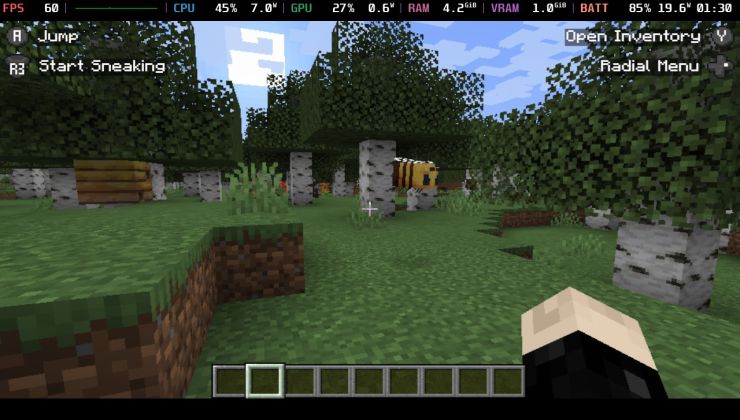While you're here, please consider supporting GamingOnLinux on:
Reward Tiers: Patreon. Plain Donations:
Patreon. Plain Donations:  PayPal.
PayPal.
This ensures all of our main content remains totally free for everyone! Patreon supporters can also remove all adverts and sponsors! Supporting us helps bring good, fresh content. Without your continued support, we simply could not continue!
You can find even more ways to support us on this dedicated page any time. If you already are, thank you!
Reward Tiers:
This ensures all of our main content remains totally free for everyone! Patreon supporters can also remove all adverts and sponsors! Supporting us helps bring good, fresh content. Without your continued support, we simply could not continue!
You can find even more ways to support us on this dedicated page any time. If you already are, thank you!
Login / Register
- Intel and NVIDIA drivers holding back a public SteamOS release, Valve not trying to compete with Windows
- Discord screen-sharing with audio on Linux Wayland is officially here
- NVIDIA release new GPU driver updates for Linux and Windows after announcing security issues
- GE-Proton 9-23 released with a Battle.net update fix for Linux / Steam Deck
- Games to claim from Prime Gaming, Jan 17 edition round-up for SteamOS Linux and Steam Deck
- > See more over 30 days here
-
GE-Proton 9-23 released with a Battle.net update fix fo…
- tuubi -
GE-Proton 9-23 released with a Battle.net update fix fo…
- Caldathras -
GE-Proton 9-23 released with a Battle.net update fix fo…
- tuubi -
GE-Proton 9-23 released with a Battle.net update fix fo…
- Mohandevir -
GE-Proton 9-23 released with a Battle.net update fix fo…
- benstor214 - > See more comments
 An idiots guide to setting up Minecraft on Steam Deck / SteamOS with controller support
An idiots guide to setting up Minecraft on Steam Deck / SteamOS with controller support How to install extra software, apps and games on SteamOS and Steam Deck
How to install extra software, apps and games on SteamOS and Steam Deck
View PC info
!Steamy.
View PC info
Last edited by Highball on 26 Dec 2023 at 7:13 pm UTC
View PC info
View PC info
I don't like the Valve Time update schedule; I don't trust Valve's testing and support capabilities for generic hardware; and I don't like the restrictions caused by the read only filesystem and A/B update mechanism.
For a gaming appliance or HTPC on generic hardware I would (and do) run a generic well-supported distro.
View PC info
Besides, most of my gaming is done outside of Steam, so the Steam-centric part of the distro is kind of lost on me. I get that this is rare for most players around here, though.
View PC info
View PC info
Wait until you find out about Fedora Kinoite/Silverblue or OpenSUSE MicroOS
It's a fairly standard approach for an appliance or coming from the embedded space. You have two completely independent images so if one gets broken (by any method) you can always boot into the other. Your motherboard's UEFI likely works the same way. It's robust, and is fine for an appliance that's going to be used by the general public that don't want to know about computers. I do know about computers and there are likely all sorts of things that I'd want on my computer that aren't going to be in Valve's image - not least because they need to fit two copies of the OS and some games into 64 GB, which isn't a restriction that I'll be under.
View PC info
I still feel that for the deck in particular, it may have been better to go with a regular immutable distribution style as overall it would offer the same benefits (if it breaks, it's just boot to the last image to fix; upgrade/downgrade the OS easily without fear, etc. It's basically unbreakable.), while also offering more user control (they could edit the image easily, with persistent changes to new images, that won't reset, if they chose. For example by using rpm-ostree.).
Best of both worlds: Easy for normie user and customizable for techy.